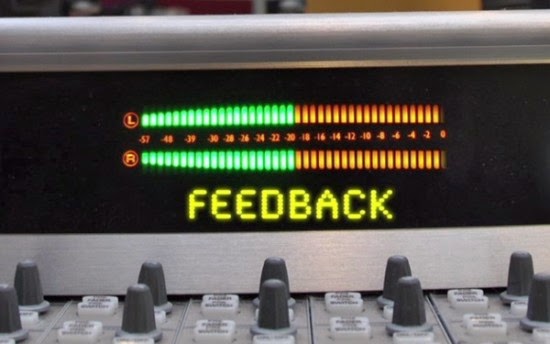"When it comes to suppressing feedback (you can never completely eliminate it), there are two methods; the classic method that’s been used for many years called “ringing out the system,” and a much faster an easier way using Smaart. Let’s look at the classic method first.
Ringing Out The System
Ringing out the system works on both the main house system and the monitor system. Here’s how it works:
1. Make sure that all the mics are on, are set at the levels they’ll most likely be at during the show, and in their normal stage positions. You should also have a mix set up with the approximate balances that you’ll eventually be using.
2. Make sure that all the hi-pass filters on the individual channels are engaged as needed. This will eliminate any low frequencies that the ear can’t hear but will be amplified nonetheless (you don’t want to amplify the rumble of trucks on the street, for example).
3. Slowly increase the overall gain of the sound system until you can just barely hear feedback. As it feeds back, lower the slider of the aux’s graphic EQ at the frequency that the feedback is occurring until the feedback stops.
TIP: Instead of using only one frequency band, you might want to set the GEQ to Draw Mode (see later in the chapter) in order to use two or three centered around the feedback frequency at a shallower level. This will eliminate the feedback without as much change to the tonality of the system.
4. Slowly increase the gain of the sound system again until feedback occurs once more. This time it will probably be at a different frequency. As it feeds back, lower the slider (or sliders) of the graphic EQ at the frequency that the feedback is occurring until it stops.
5. Repeat the process (you might have to repeat four or five times) until you finally hear multiple frequencies feeding back at the same time. At this point, you’ve now reached the maximum headroom in the system before feedback. Back the gain down a bit until the feedback stops and begin your soundcheck, rehearsal or show.
One of the problems with this method is that you actually have to find the frequency on the graphic EQ that controls the feedback you’re hearing. This usually takes a little ear training to develop a feel for how the frequencies you’re hearing correspond to the frequency EQ sliders.
Another problem is that after you used Smaart to tune the system to the room, you might be destroying that tuning by pushing the system louder and then trying to eliminate the feedback. Modern sound systems are capable of being pretty loud and usually don’t have to be tweaked to within an inch of their lives to get more gain before feedback."
One of the cool features of the Presonus StudioLive console is that if you connect a computer to it, you can access the Smaart measurement tools (Smaart stands for Sound Measurement Acoustical Analysis Real Time) that provide a streamlined way of tuning your sound system to the room, find feedback, troubleshoot outputs, and automatically compensate for delay speakers. It's a very powerful and easy to use package that makes what used to be a time-consuming chore a breeze.
You can read additional excerpts from the Presonus StudioLive Mixer Official Handbook and my other books on the excerpt section of bobbyowsinski.com.
----------------------------------
You should follow me on Twitter and Facebook for daily news and updates on production and the music business.
Don't forget to check out my Music 3.0 blog for tips and tricks on navigating social media and the new music business.



1 comment:
Great stuff! I also find that an iPhone spectrum analyzer app can really help pinpoint the feedback frequencies. (I use n-Track Tuner, though there are many others.)
Post a Comment